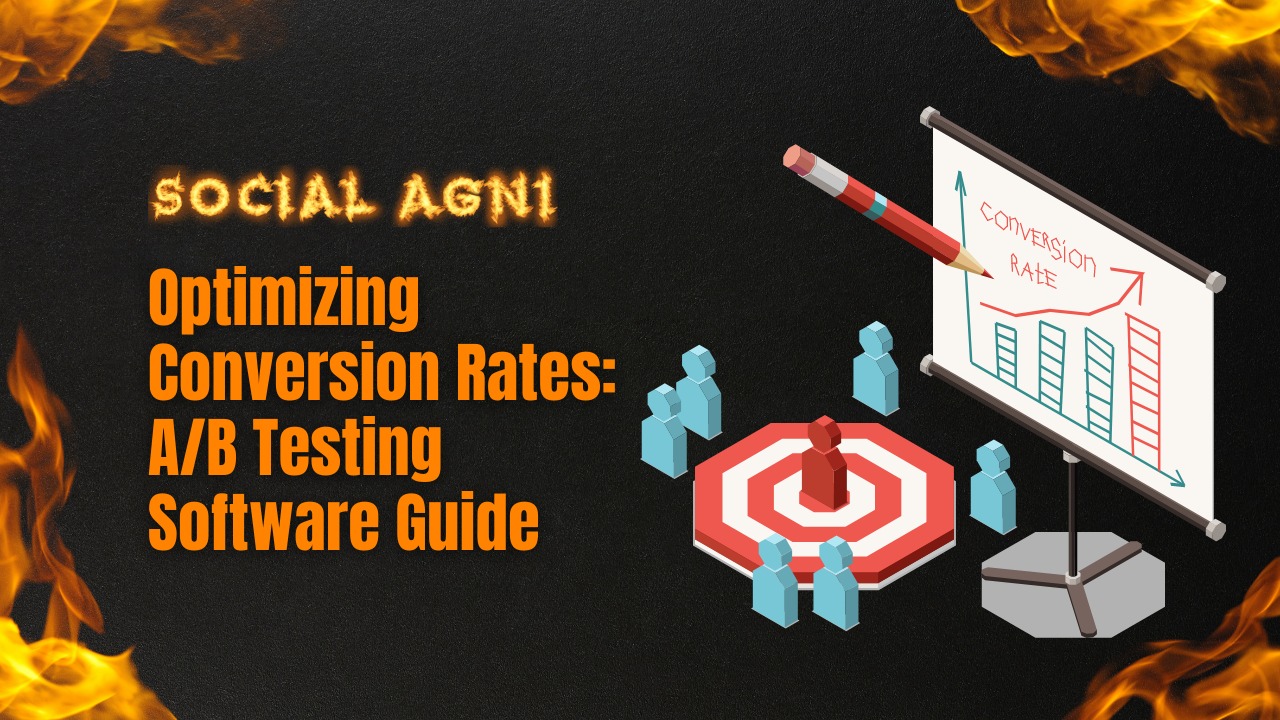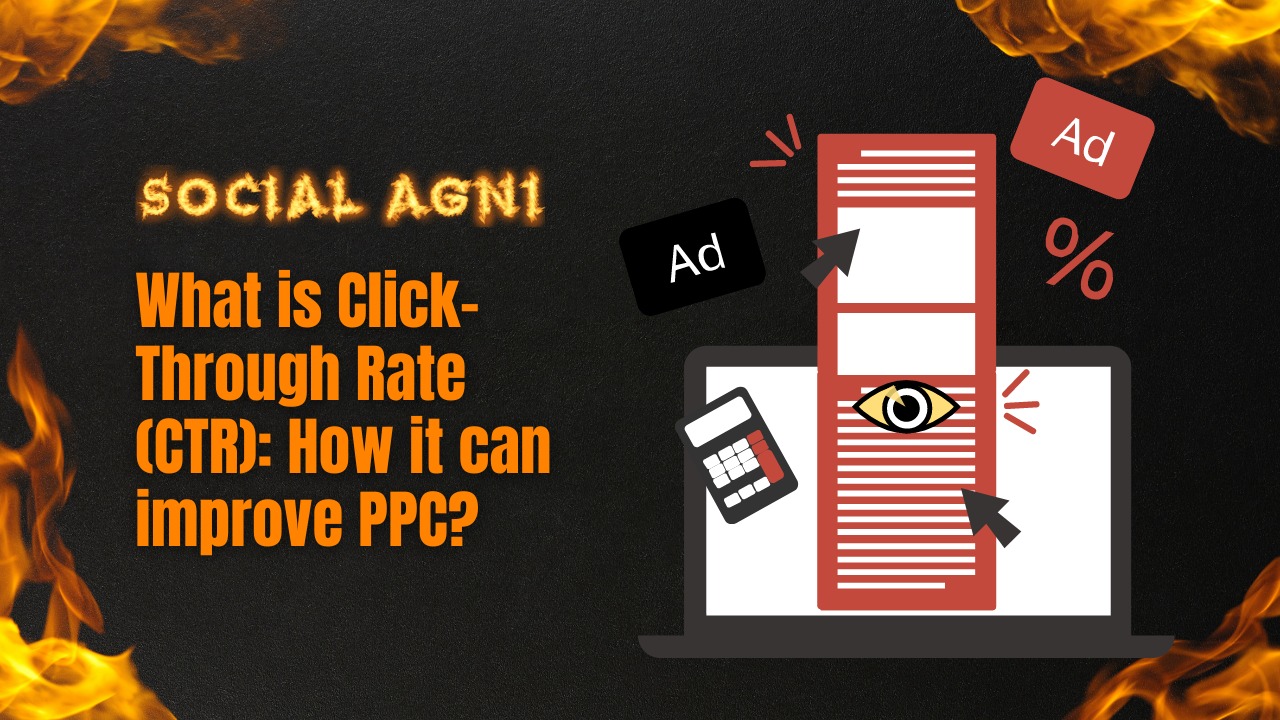Professionals and businesses use LinkedIn to develop a digital presence, cultivate networks, and expand their enterprises. LinkedIn’s 740 million users across sectors and locations give huge marketing opportunities. In today’s competitive business environment, a strong LinkedIn marketing plan is crucial to stand out and reach your target audience. The top 10 LinkedIn marketing methods will help you maximize your profile, interact with the proper audience, and produce quality leads. Optimize your LinkedIn profile first. Your title and summary can improve search results and attract the correct audience by using relevant keywords. Customizing your profile URL improves SEO, making you simpler to locate and interact with. Showing your skills, experience, and accomplishments in a succinct yet engaging manner builds credibility and makes your profile more interesting to prospective contacts. Successful LinkedIn marketing requires compelling and relevant content. You may offer industry trends, ideas, and thought leadership by writing often. Images and videos may make your content more shared and interesting. A great LinkedIn Company Page helps create your brand’s identity and reach. High-quality images, branding, and captivating company description leave a lasting impression. Encouraging workers to post updates and participate in discussions boosts brand visibility and trust. LinkedIn Groups are great for networking with peers and specialists. Joining relevant groups, actively participating in conversations, and contributing unique insights help you create contacts, establish your expertise, and grow your network. LinkedIn Ads may expand your reach and target particular audiences. Setting goals, targeting demographics and interests, and testing ad styles will help you reach and engage your target audience. LinkedIn SEO is crucial too. By carefully employing relevant keywords in your articles and profile, optimizing your material for search engines inside LinkedIn, and monitoring your SEO efforts using LinkedIn analytics, you may raise your visibility and chances of being discovered by potential connections. LinkedIn influencers may enhance brand awareness and reputation. Identifying industry influencers, following and engaging with their material, and seeking cooperation options will help you reach a bigger audience. Employee advocacy boosts brand awareness. Encourage employees to post corporate updates and material, provide training and guidelines, and reward LinkedIn interaction to grow your brand’s organic reach. Finally, monitoring and improving your LinkedIn marketing plan is crucial. Tracking reach, engagement, and conversions, reviewing content and campaign effectiveness, and optimizing your approach may help you meet your business goals. Top 10 LinkedIn marketing strategies 1. Optimize Your LinkedIn Profile Your LinkedIn profile is your digital business card and first impression on potential prospects. Optimizing your profile makes you discoverable and appealing to your target audience. Key LinkedIn profile optimization steps: Use relevant keywords in your headline and summary: Use terms that appropriately indicate your professional knowledge, industry, and talents in your headline and summary. Search engines and consumers might locate your profile using these keywords. Customize your URL for greater search visibility: LinkedIn’s default URL may not be search engine-optimized. Name your LinkedIn profile URL. This improves search engine ranks and makes you simpler to locate. Showcase your expertise and accomplishments: Highlight your experience, accomplishments, and projects. Always quantify your outcomes. This proves your competence and boosts your profile. To exhibit your work and add context, attach links to publications, presentations, and portfolios. Request recommendations and endorsements: Ask colleagues, clients, and business partners for recommendations that emphasize your talents, competence, and work ethic. These testimonials boost your professional reputation. Encourage people to praise your talents, which boosts your expertise. Use professional profile and background images: Choose a high-quality, professional profile photo that truly portrays you and your company. Your profile photo should be welcoming and industry-appropriate. Choose an interesting backdrop image that matches your brand. Optimize your contact information: Update and make your email and website easily accessible. Potential clients or colleagues can easily contact you. You may appear in relevant searches and attract your target audience by improving your LinkedIn profile. A well-optimized LinkedIn profile sets the basis for successful networking and lead creation. 2. Create Engaging and Relevant Content Create and share high-quality, interesting material on LinkedIn to demonstrate your expertise, create contacts, and engage your target audience. You can become a trusted expert by sharing insights, industry expertise, and thought leadership. LinkedIn content creation tips: Upload regularly: LinkedIn’s publishing tool lets you upload long-form content. These articles let you explore industry subjects, exchange thoughts, and demonstrate your knowledge. Regularly releasing articles establishes a presence and encourages your network to connect with and share your material. Share industry insights, tips, and thought leadership: Write succinct, informative blogs about industry trends, insights, or advice. Sharing your expertise makes you a thought leader and engages your contacts. Visually engaging and shareable material includes text, graphics, videos, and pertinent links. Use Multimedia: Images, videos, infographics, and slideshows make the material more visually attractive and engaging. Visual content engages more. Make aesthetically engaging, shareable content from existing content. Use storytelling: Telling engaging stories can boost your content’s effectiveness. Personal tales, case studies, and success stories illustrate your knowledge and worth. Stories provide emotion and make things more memorable. Engage with your audience: Respond to comments, ask questions, and start conversations. This builds genuine relationships and positions you as an approachable professional. Likes, comments, and shares improve visibility and network. Track content performance using LinkedIn analytics: Views, engagement, and click-through rates might reveal what your audience likes. Analyze the data to find successful themes, formats, and trends and alter your content strategy. Maintain content consistency. Create a content calendar to post regularly and provide excellent information. Create compelling and relevant content to build trust, make meaningful relationships, and generate leads on LinkedIn. 3. Build a Strong LinkedIn Company Page A good LinkedIn Company Page is vital for brand awareness, product promotion, and audience engagement. A well-optimized Company Page may boost credibility, followers, and leads. Tips for a good LinkedIn Company Page: Write a captivating company description: Clearly state your brand’s goal, values, and USPs. Increase search prominence with industry-specific keywords. Address your target audience’s requirements and interests and demonstrate your company’s worth. Use high-quality
Businesses strive to increase their online presence and conversion rates in today’s competitive digital market. A/B testing, a strong tool for comparing two versions of a website or app to see which performs better, is one of the best ways to achieve this aim. Businesses use software for A/B testing. A/B testing software helps firms develop, implement, and analyze A/B tests easily. It simplifies testing to find areas for improvement, maximize conversion rates, and improve website performance. A/B testing software aids data-driven decision-making. Businesses may learn what customers want by running controlled tests and evaluating user behavior and conversion rates. Data-driven decision-making improves user experiences, engagement, and conversion rates. A/B testing software is flexible. Landing pages, call-to-action buttons, navigation menus, content positioning, and design elements can be used. Businesses may maximize conversion rates and achieve their goals by fine-tuning every aspect of their online presence. A/B testing software simplifies testing with several capabilities. These include user-friendly interfaces, drag-and-drop flexibility, comprehensive statistical analysis, real-time reporting, and connection with other marketing tools and platforms. Such capabilities allow firms to easily run A/B testing, track performance, and receive actionable information without technical experience. This thorough overview covers A/B testing tools. We’ll examine its features, the numerous types of software, and how to choose the ideal one for your organization. We will also discuss how to build up experiments, execute tests, assess outcomes, and make data-driven decisions. This post will teach you how to use A/B testing tools to boost conversion rates and business growth. Understanding A/B Testing Software A/B Testing Software A/B testing software, often known as split testing software, lets organizations compare two or more versions of a website, mobile app, or other digital assets in controlled studies. It lets companies evaluate items’ effects on user behavior and conversion rates. The program collects clicks, conversions, and engagement metrics by randomly splitting website or app traffic between versions. A/B testing software’s main features Test Creation A/B testing software lets you design and specify web page or app element variants. Test hypotheses by changing design, content, layout, or call-to-action components. Traffic Allocation The program equally distributes website or app users across the versions being evaluated. Randomization eliminates prejudice and ensures accuracy. Data Collection A/B testing software monitors clicks, conversions, bounce rates, session lengths, and other information. It details variance performance. Statistical Analysis The program analyzes data for significance and reliability. It shows firms whose changes boost conversion rates statistically. Reporting A/B testing software produces detailed experiment reports and visuals. These reports aid firms in data analysis and decision-making. Integration Many A/B testing software integrate with marketing and analytics systems. A/B testing data may be combined with other indicators for a comprehensive view of marketing activities. Types of A/B Testing Software A/B testing software comes in several types. A/B testing software is either cloud-based or self-hosted. Cloud-Based A/B Testing Software Users access cloud-based software via a web browser. It’s simple, scalable, and updated frequently. Cloud-based solutions offer a simple interface, easy test development, and strong reporting. They work for all firms, especially those with little technological resources. Self-Hosted A/B Testing Software Self-hosted A/B testing software is installed and hosted on the company’s servers. For enterprises with security or compliance needs, it offers more control and customization. Installing, maintaining, and customizing self-hosted systems requires technical skills. They’re more flexible yet cost more and require IT maintenance. Businesses should evaluate technological capabilities, money, scalability, and data protection when choosing an A/B testing program. The business’s demands and resources must choose the software type. Choosing the Right A/B Testing Software A. Identifying Your Requirements Before starting the selection process, you must determine your A/B testing needs and goals. Consider these elements Testing Objectives Set A/B testing goals. Do you prioritize conversion rates, user engagement, or website or app optimization? Budget Consider A/B testing software costs. Monthly subscriptions or enterprise-level fees vary by solution. Check your budget for features and support. Technical Expertise Assess your team’s technical knowledge. A/B testing software can be user-friendly or need coding or programming abilities. Select a solution that fits your team. Scalability Consider software scalability. Make sure your A/B testing software can manage large traffic without affecting performance. Integration Make sure the program works with your marketing tools. Integration simplifies testing and allows data exchange between systems. B. Key Considerations in Selecting A/B Testing Software Consider these aspects while choosing A/B testing software for your business User Interface and Ease of Use Choose intuitive software. A drag-and-drop editor, visual editing, and pre-built templates facilitate test creation. Make sure the program is intuitive and easy to use. Integration with Marketing Tools If you utilize analytics platforms, CRM systems, or CMS systems, make sure the A/B testing software interfaces easily with them. Integration enhances data analysis and procedures. Statistical Analysis and Reporting Capabilities A/B testing software should offer comprehensive statistical analysis and reporting. Find confidence intervals, p-values, and statistical significance markers. The program should also provide clear and attractive test reports. Real-time reporting aids testing and decision-making. Pricing and Scalability Compare software pricing to your budget. Check the cost against your expected testing volume and scalability demands. Some software has tiered pricing based on visits or testing. Check the price model for your business size and development objectives. Customer Support and Training Check the software vendor’s customer support and training. Look for software manuals, tutorials, and training materials. In case of troubles or queries during implementation, check customer service channels including email, live chat, and phone assistance. Consider these parameters to find an A/B testing software that meets your company’s needs, technical ability, and budget. Implementing A/B Testing Software A. Setting up A/B Testing Experiments Test Hypothesis and Goals First, state your hypothesis and goals. Choose an element or variant to test and build a hypothesis about its influence on conversion rates or user behavior. Determine Test Variables Choose the web page or app variables you wish to test. Headlines, call-to-action buttons, layouts, graphics, and other elements can impact user behavior. For reliable results,
Click-Through Rate (CTR) is an important metric for Pay-Per-Click (PPC) advertising, and it can have a significant impact on the success of your PPC campaigns. In this article, we will explain what CTR is, how it is calculated, and how it can be used to improve your PPC performance. What is Click-Through Rate (CTR)? Click-Through Rate (CTR) is a gauge utilized for assessing the performance of internet marketing campaigns. It is computed by dividing the number of clicks an advertisement receives by the total number of times it is displayed or viewed, which is referred to as impressions. CTR is expressed as a percentage, and a higher CTR indicates that more people are clicking on the ad relative to the number of times it is displayed. CTR is an important metric for online advertisers because it is an indicator of how well their ads are resonating with their target audience. A high CTR indicates that the ad is relevant and compelling, and that the audience is engaging with the content. On the other hand, a low CTR suggests that the ad is not resonating with the audience, and that changes need to be made to improve the campaign’s performance. By tracking and optimizing for CTR, advertisers can improve the effectiveness of their campaigns and achieve better ROI. How is CTR Calculated? CTR is calculated by dividing the number of clicks an ad receives by the number of times the ad was displayed or viewed (impressions). The resulting percentage represents the proportion of people who clicked on the ad after seeing it. For example, if an ad is displayed 1,000 times and receives 50 clicks, the CTR would be 5% (50/1000 x 100%). A high CTR indicates that a larger proportion of people who saw the ad found it relevant or interesting enough to click on it. A low CTR, on the other hand, indicates that the ad may not be resonating with the intended audience or that it may need to be optimized to improve its effectiveness. It’s important to note that CTR should not be the sole metric used to measure the success of a PPC campaign. Other metrics such as conversion rate, cost per click, and return on ad spend should also be considered. However, CTR can provide valuable insights into the effectiveness of your ad copy, targeting, and overall campaign strategy. By monitoring and analyzing your CTR, you can identify areas for improvement and optimize your campaigns for better performance. Why is CTR Important for PPC Advertising? CTR is an important metric for PPC advertising because it can indicate how well your ads are resonating with your target audience. A high CTR generally means that your ad is relevant and compelling to your audience, while a low CTR may indicate that your ad needs to be optimized or that your targeting is off. In addition to measuring ad effectiveness, CTR can also have a direct impact on the success of your PPC campaign. The higher your CTR, the more likely it is that your ad will generate conversions at a lower cost. This is because a high CTR leads to a high Quality Score, which can result in lower costs per click and higher ad rankings. How Can You Improve Your CTR? There are several ways to improve your CTR and optimize your PPC campaigns for success: Write Compelling Ad Copy Your ad copy is the first thing that your audience sees, and it needs to be compelling enough to convince them to click. To write effective ad copy, you need to understand your target audience and what motivates them. Use attention-grabbing headlines and targeted messaging to capture your audience’s attention and encourage clicks. In addition to being compelling, your ad copy should also be clear and concise. Use language that is easy to understand and avoid industry jargon or buzzwords. Make sure that your ad copy accurately reflects the content of your landing page, and avoid making promises that you can’t keep. Use Relevant Keywords The cornerstone of a prosperous PPC campaign is the utilization of effective keywords. They are the search terms that your potential customers are using to find products or services like yours. To ensure that your ads are reaching the right people, you need to use relevant keywords that accurately describe your business. Use keyword research tools to find the best keywords for your campaign. Look for keywords with high search volume and low competition, and make sure that they are relevant to your ad and landing page. Don’t try to cram too many keywords into your ad copy, as this can make it sound unnatural and spammy. Optimize Your Landing Pages Your landing page is where your potential customers will go after they click on your ad. It needs to be relevant to your ad and provide a clear call-to-action. Make sure that your landing page is optimized for conversions and that it loads quickly. To optimize your landing page, you need to focus on three key elements: design, messaging, and usability. Use a clean, professional design that is easy to navigate and visually appealing. Make sure that your messaging is consistent with your ad copy and that it clearly communicates the value of your product or service. Finally, ensure that your landing page is easy to use and that the call-to-action is clear and prominent. Test Your Ads Testing is an essential part of any successful PPC campaign. By testing different ad copy, images, and calls-to-action, you can identify what resonates best with your target audience and optimize for the highest CTR. To test your ads, use A/B testing to compare different versions of your ads. Create two versions of your ad with one key difference (such as a different headline or call-to-action) and run them simultaneously. Analyze the results to determine which version performed better, and use that version to optimize your campaign. Refine Your Targeting Targeting is another critical component of PPC advertising. To ensure that your


